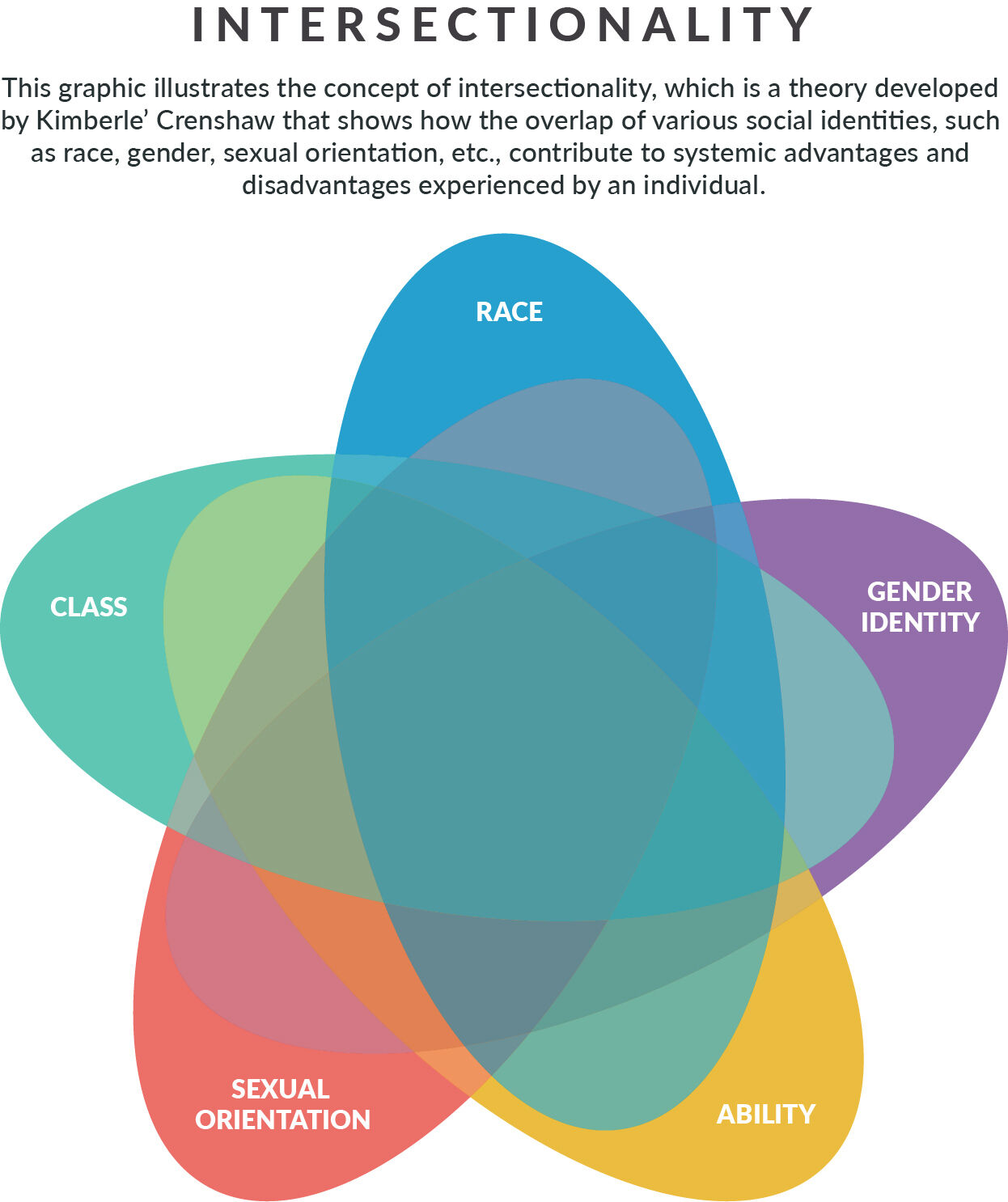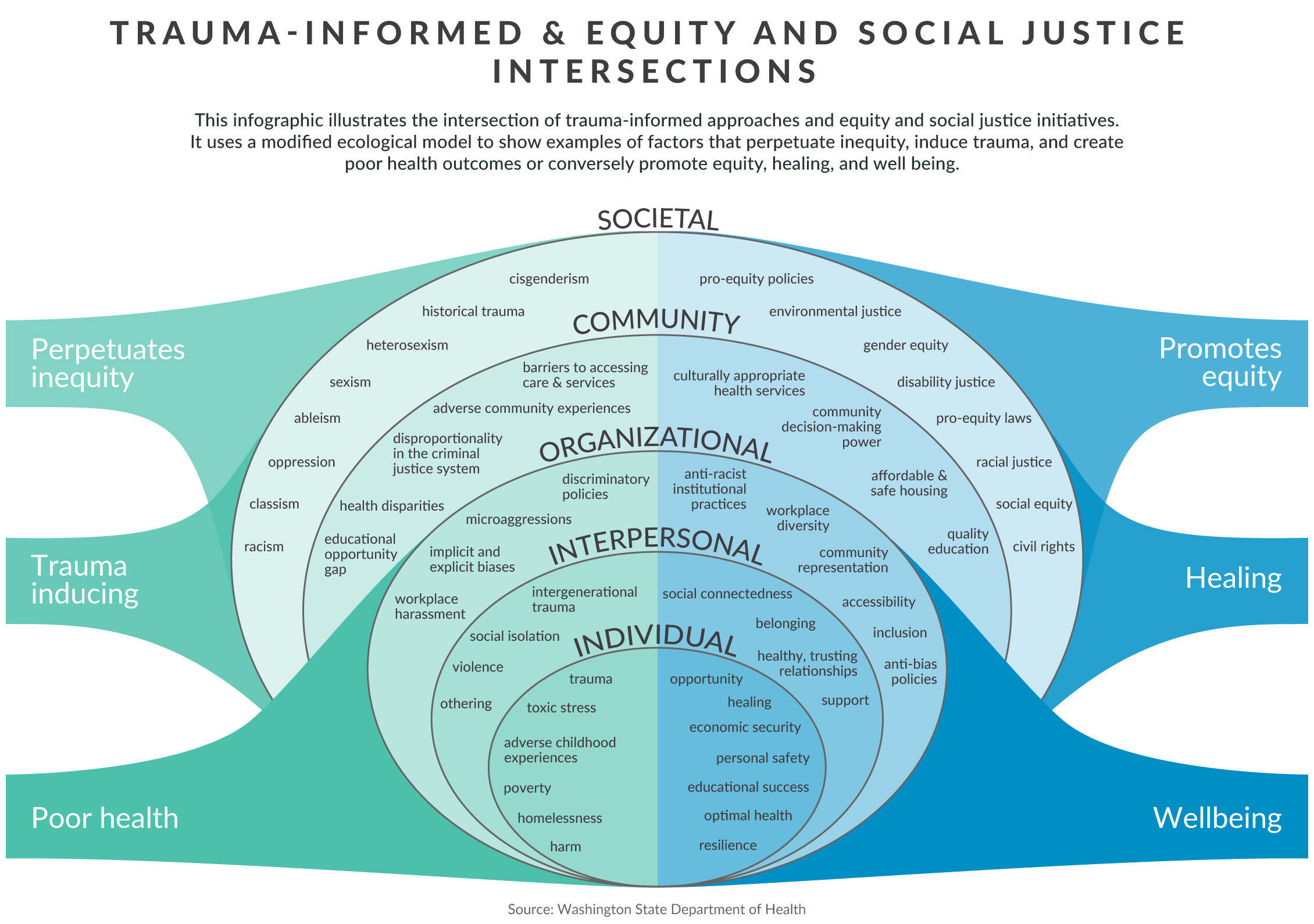
Inequities and Intersectionality
Because of historic and contemporary injustices, HIV disproportionately affects Black, Indigenous, and other people of color, people with low income, and gay, bisexual, and other men who have sex with men. RWHAP data from 2020 show that:
- Forty six percent of RWHAP clients self-identified as Black/African American, 23.6% as Hispanic/Latinx, and an additional 2% each as American Indian/Alaska Native, Asian, Native Hawaiian/Pacific Islander, and people of multiple races.
- Nearly two-thirds of RWHAP clients are living at or below 100% of the Federal Poverty Level (FPL), with the percentages of American Indian/Alaska Native, Black/African American, and Hispanic/Latinx clients living at or below 100% FPL higher than that among clients of other races.
Of the 34,800 estimated new HIV infections in the US in 2019, 70% were among gay and bisexual men, with 26% of those men identifying as Black and 24% as Hispanic/Latinx. Likewise, the experience of trauma disproportionately impacts people with HIV and other communities that have been marginalized. Here are some examples:
- People who are Black, Hispanic/Latinx or multiracial experience more adverse childhood experiences (ACEs) compared to people who are white or people who are Asian.
- Women with HIV have five times the rate of recent post-traumatic stress disorder than the general population of women, and twice the national rate of intimate partner violence.
- Of the estimated 3.5 million people who are homeless every year in the U.S., as many as 3.4% have HIV. This represents a rate three times higher than that of the general population. Within the larger society, people experiencing homelessness often are marginalized, isolated, and discriminated against.
- A study found that people who are gay, lesbian, bisexual, transgender, queer, or gender non-confirming are nearly four times as likely to be victims of violent crime than those outside such communities. The research found that members of these communities experienced a rate of 71.1 violent victimizations per 1,000 persons a year, compared with 19.2 per 1,000 persons a year among non-sexual and gender marginalized groups.
As HIV disproportionately impacts communities that have been marginalized, it is helpful to use an intersectional approach to understand trauma and resilience among people with HIV. Intersectionality is a theory developed by Kimberle’ Crenshaw that shows how the overlap of various social identities, such as race, gender and gender identity, sexual orientation, ability, immigration status and class, contribute to systemic advantages and disadvantages experienced by an individual. Crenshaw coined the term intersectionality in a 1989 paper to reflect that social identities cannot be teased apart and addressed individually; that the identities must be seen together because of overlapping forms of discrimination.

For example, one school-based study found that while Black and Latinx transgender youth had similar rates of depression and suicidality compared to white transgender youth, they had higher rates of depression and suicidality, and also higher rates of race-based harassment compared to Black and Latinx cisgender youth. This finding illustrates the social and additive complexity that occurs at the intersection of marginalized identities, and its impact on mental health.
The following graphic was developed by the Washington State Department of Health to illustrate how injustice at the societal, community, organizational, interpersonal, and individual level cause trauma and perpetuate inequities. Conversely, the graphic also illustrates how a trauma-informed and equity-centered approach at each of these levels can promote healing, resilience, and equity.

People with HIV are often from communities that have been marginalized and their intersecting social identities (e.g., Black, trans, etc.) are often portrayed in deficit-based ways. Members of the TIA Toolkit Advisory Panel suggested inclusion of culturally relevant and affirming approaches within RWHAP programs to uplift the beauty of cultures and communities that have been marginalized and oppressed. Celebrating and honoring resilience is key to a healing-centered approach. Throughout this toolkit, we provide action steps and reflections to assist the workforce in building upon the existing strengths, resilience, community, and culture of individuals, affirming them as whole people.
Intersectionality Reflection Questions
Utilize the following reflection questions to begin thinking more concretely about the impact of the work your organization does and whose needs and experiences need to be centered.
- What representation of marginalized groups do you have inside of your organization?
- What communities are the focus of your organization?
- How do the systems at play further marginalize both groups?
- Which aspects of your identity are privileged and which parts are subjugated? How do they intersect?